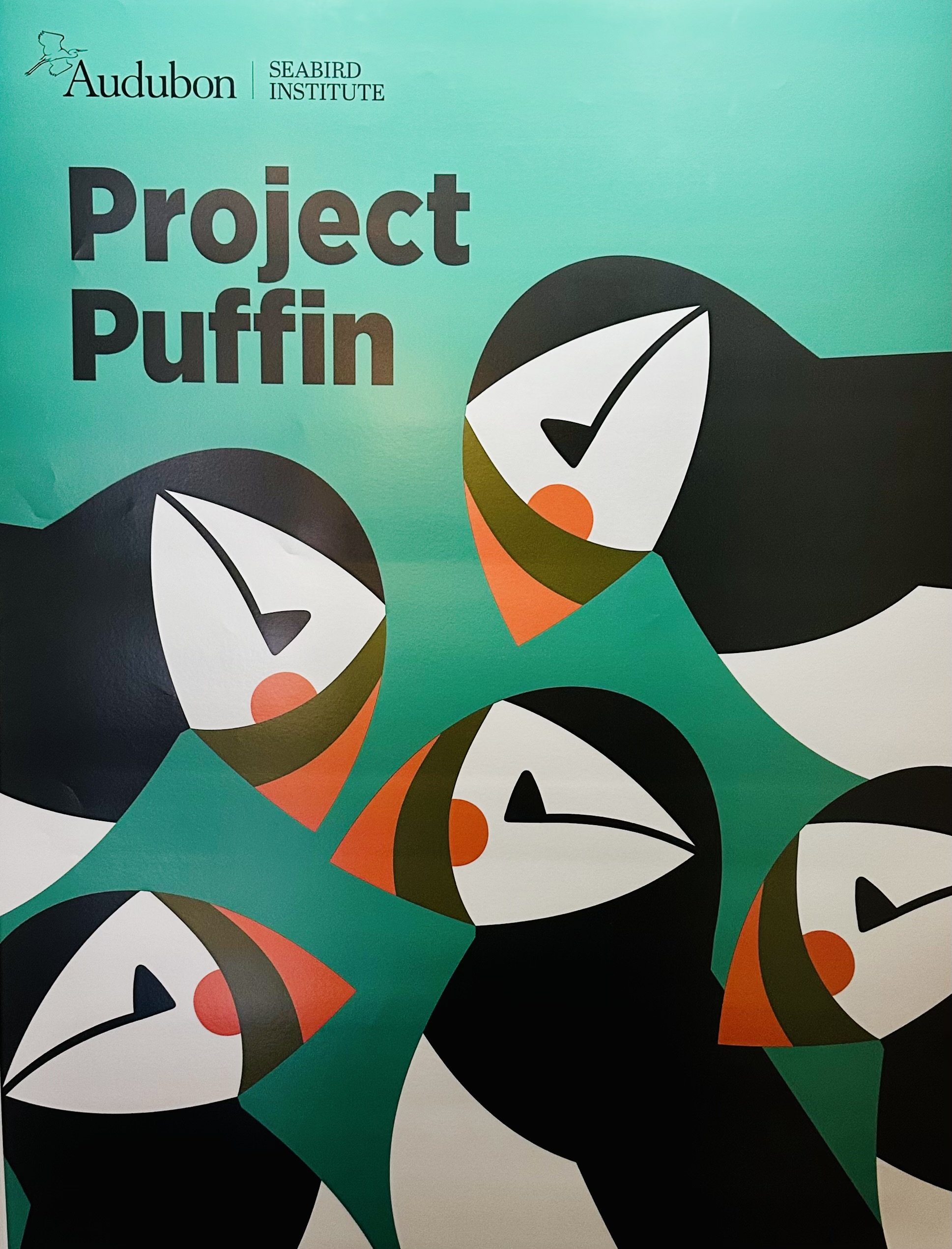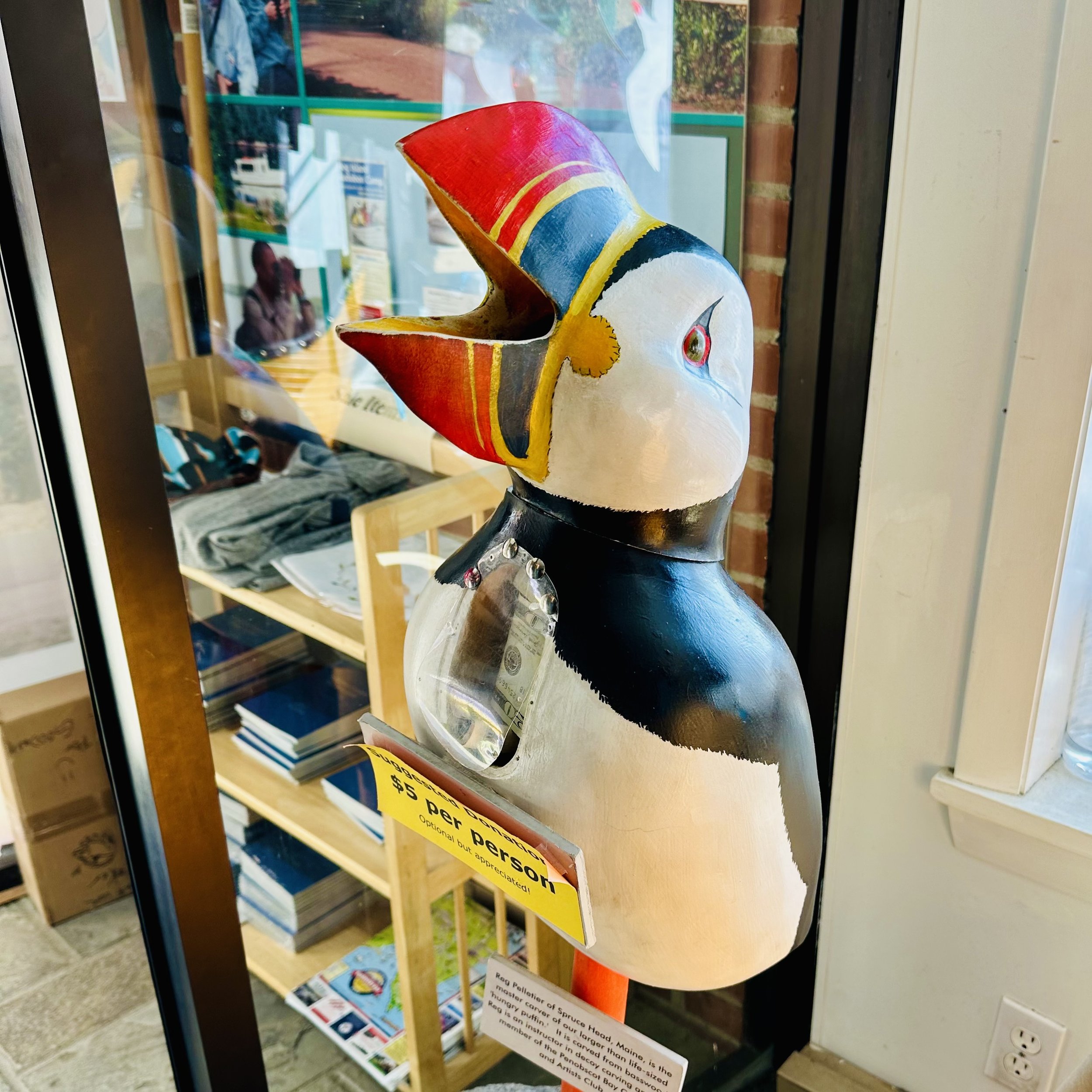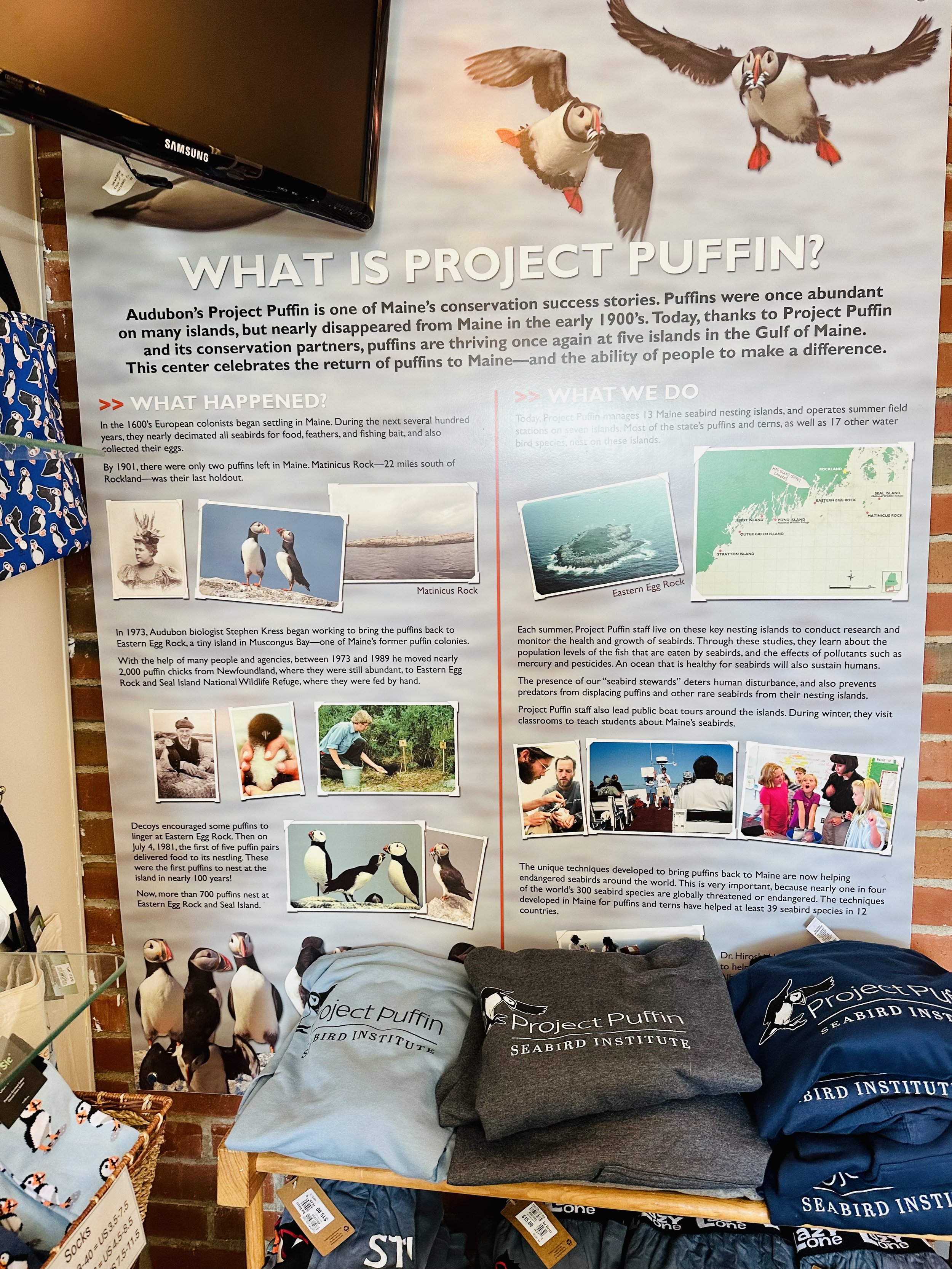Project Puffin
It was too late in the year for us to see live puffins in Maine. Breeding season had ended, and the seabirds had already left their colonies and returned to sea. The next best thing was a visit to the Project Puffin Visitor Center in Rockland, about eight miles south of Rockport.
Puffins are cute! They are instantly recognizable, with black and white feathers and colorful beaks. They are smaller than I expected, barely a foot tall and weighing just a pound or less. Their wings are adapted for swimming, flying, and diving to catch fish. They spend their lives at sea, migrating back to the same island each year to breed. The female puffin lays just one egg in a deep burrow underground. Both parents take turns incubating the egg and feeding small fish to the chick.
At the Visitor Center, I watched an excellent documentary film about Project Puffin. Puffins had nearly disappeared from Maine in the early 1900s. In 1973, Dr. Stephen Kress launched an ambitious effort to bring puffins back to Maine. With help from many volunteers, Dr. Kress carefully transplanted thousands of puffin chicks from Newfoundland to Eastern Egg Rock (off the coast of Rockland) and raised them there. The hope was that the young puffins would return when they were ready to breed. They also put out mirrors and puffin decoys to lure the birds to the island. Eight years later, puffins were spotted nesting! Now there are over 700 puffins who nest every year at Eastern Egg Rock and nearby Seal Island.
The National Audubon Society’s Seabird Institute has used a similar approach to restore the populations of terns and other endangered seabirds. It’s a success story that has been repeated around the world.



The Project Puffin Visitor Center is free to the public (a $5 donation is suggested). If you are lucky enough to visit Maine during the puffin breeding season, you can take a puffin boat cruise! They leave out of Boothbay Harbor and New Harbor.
Fun Facts:
A baby puffin is called a puffling
At about six weeks old, a young puffin leaves its nest and spends the next 2-3 years at sea
A group of puffins is called a colony, a burrow, a circus, a gathering, or an improbability
A puffin can hold a dozen or more small fish in its beak
Puffin beaks glow under ultraviolet light
The volunteers who work on Project Puffin and other Seabird Institute projects are called puffineers
Sources: Project Puffin, Yorkshire Wildlife Trust